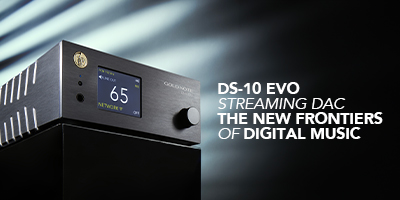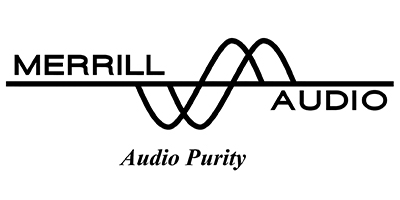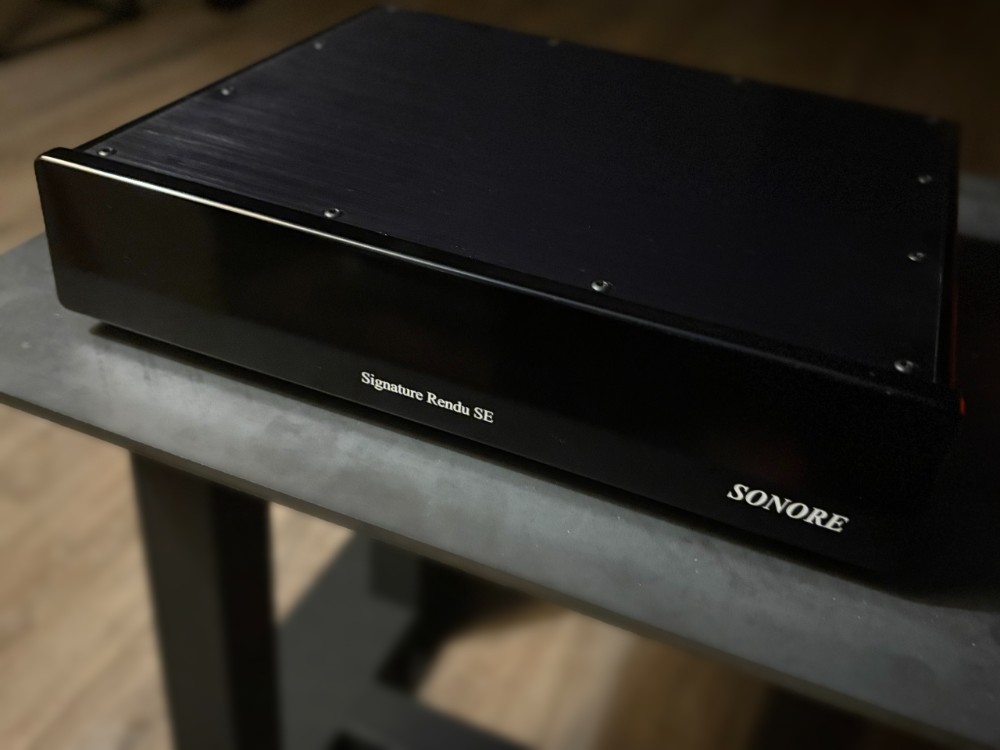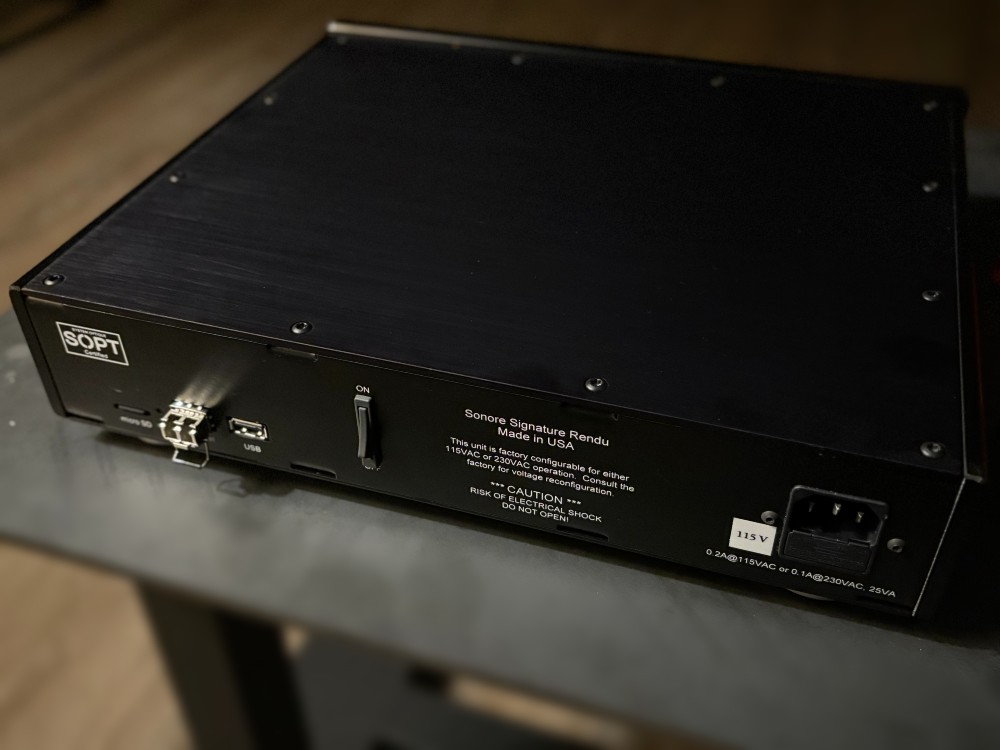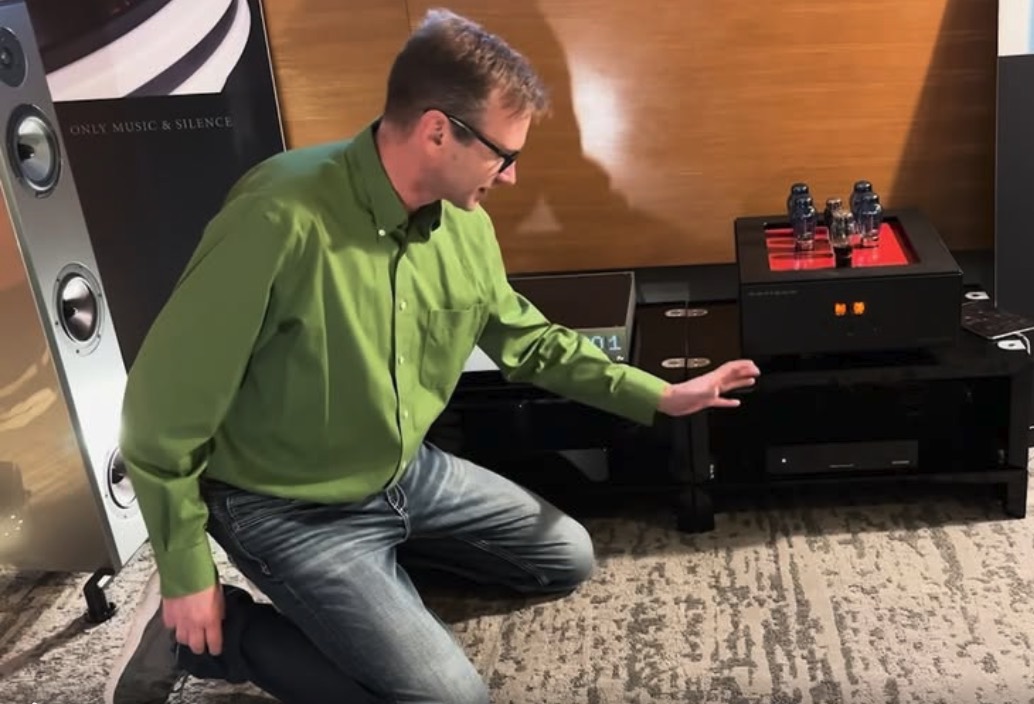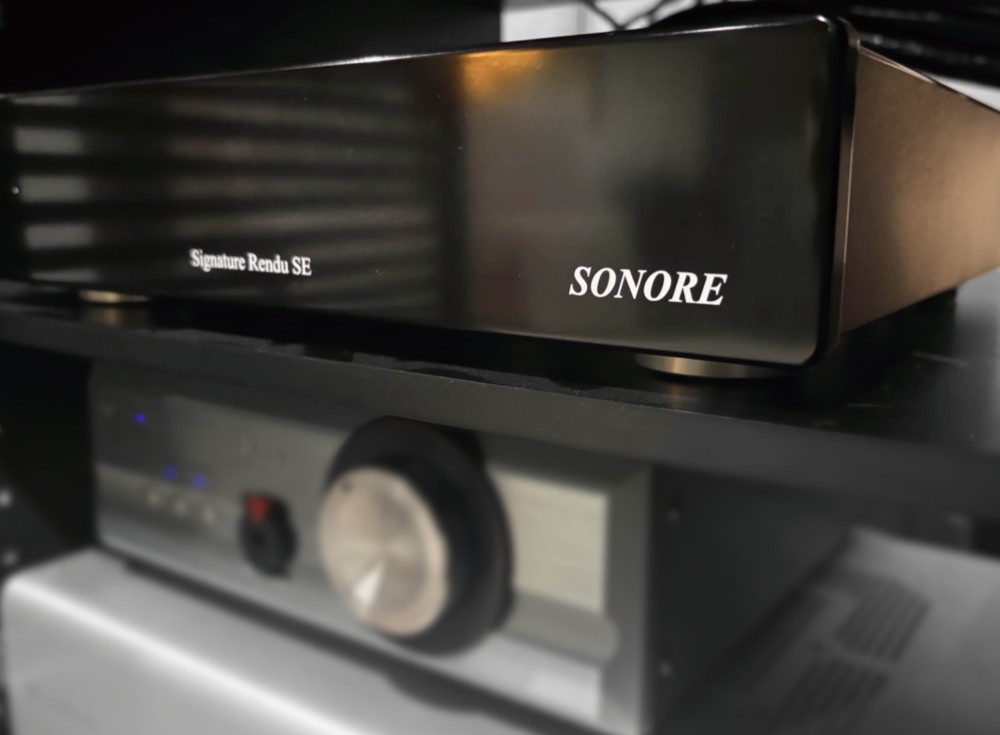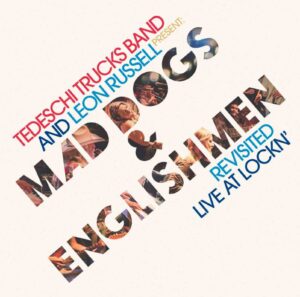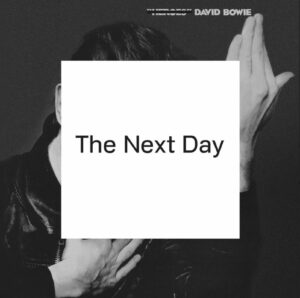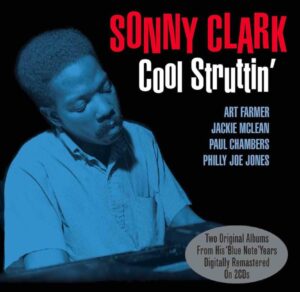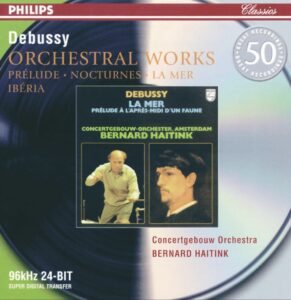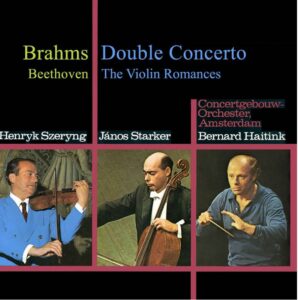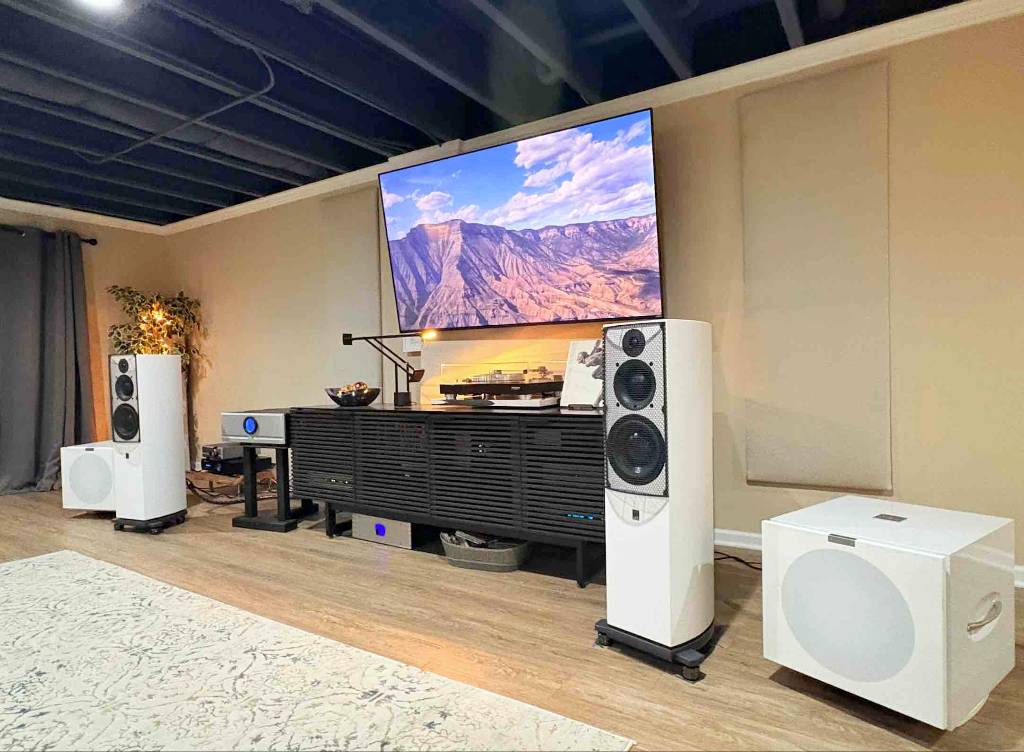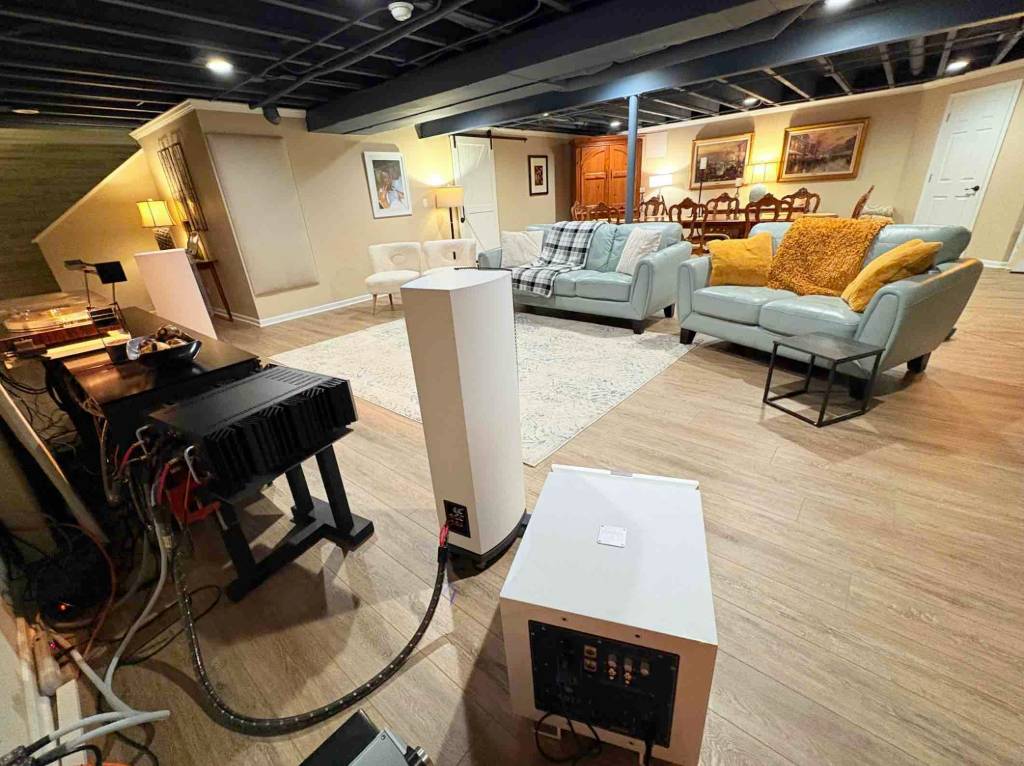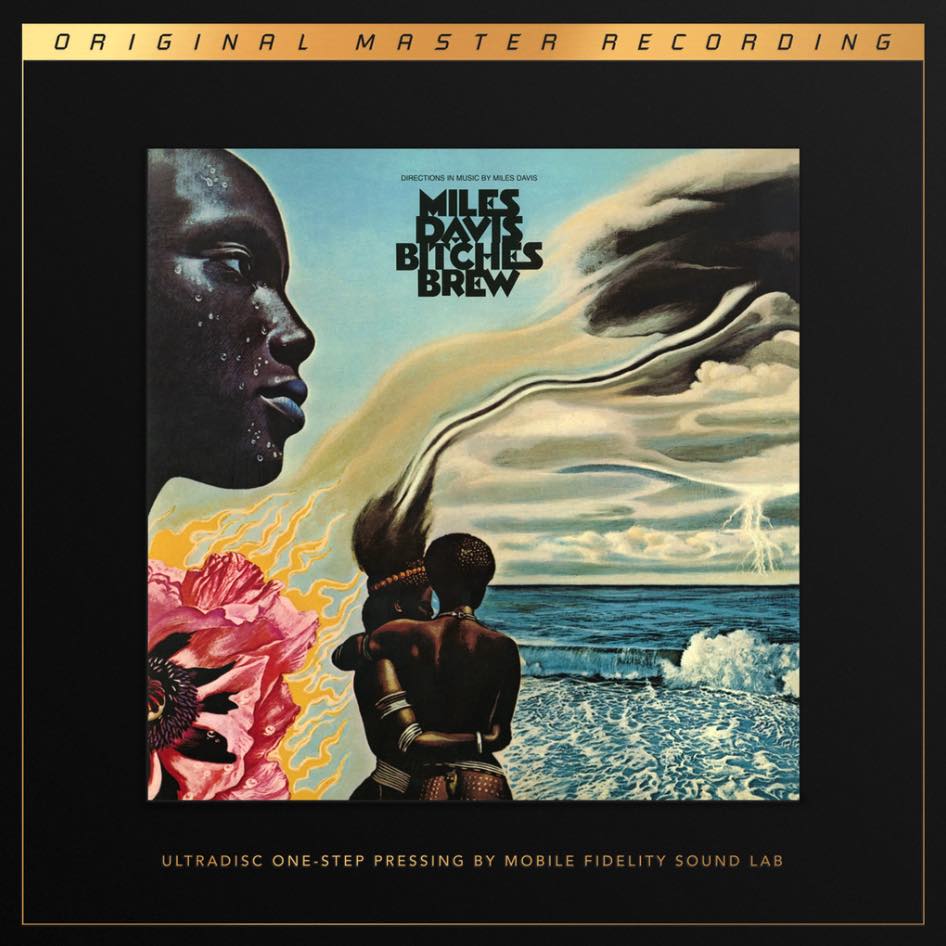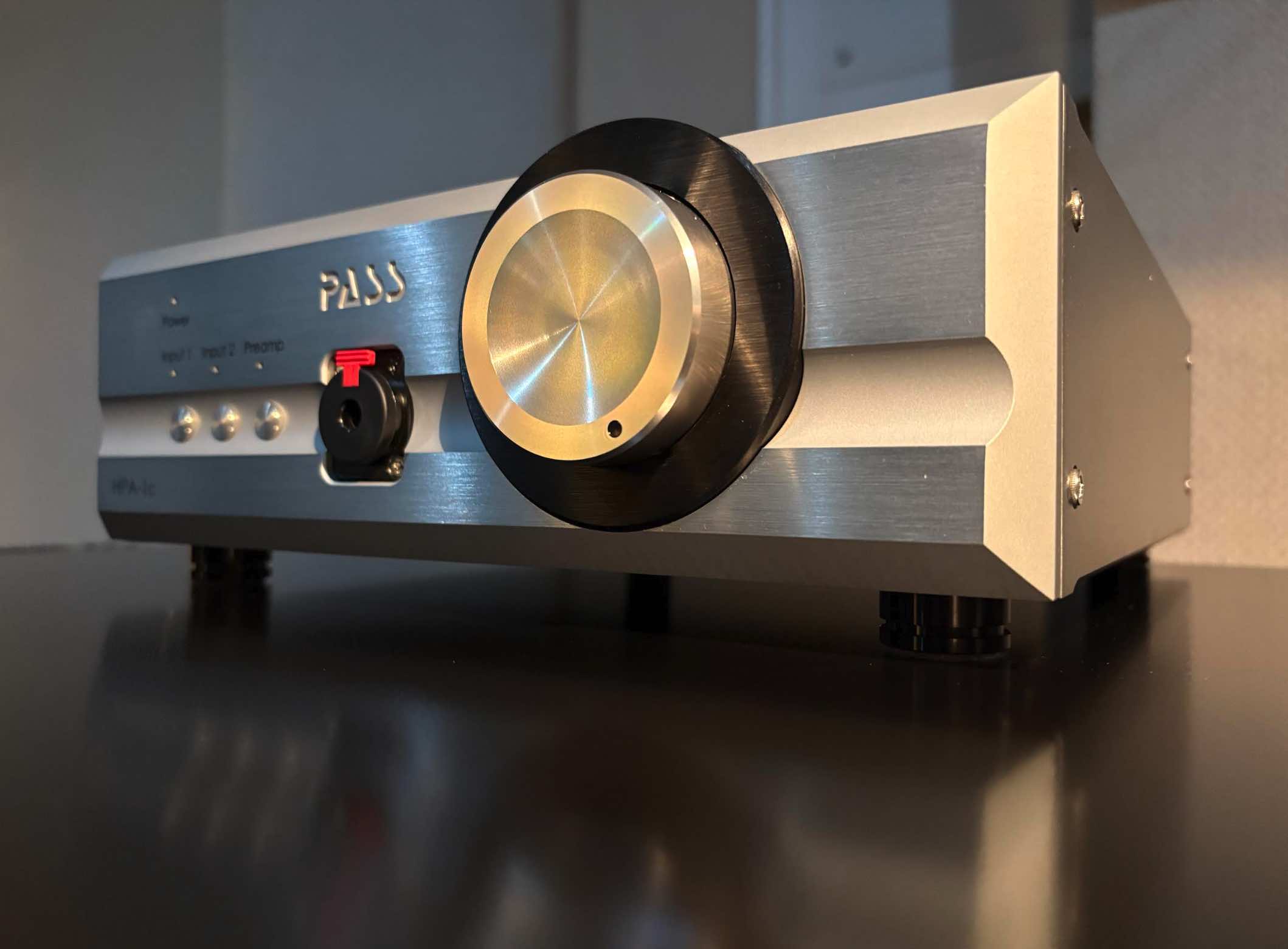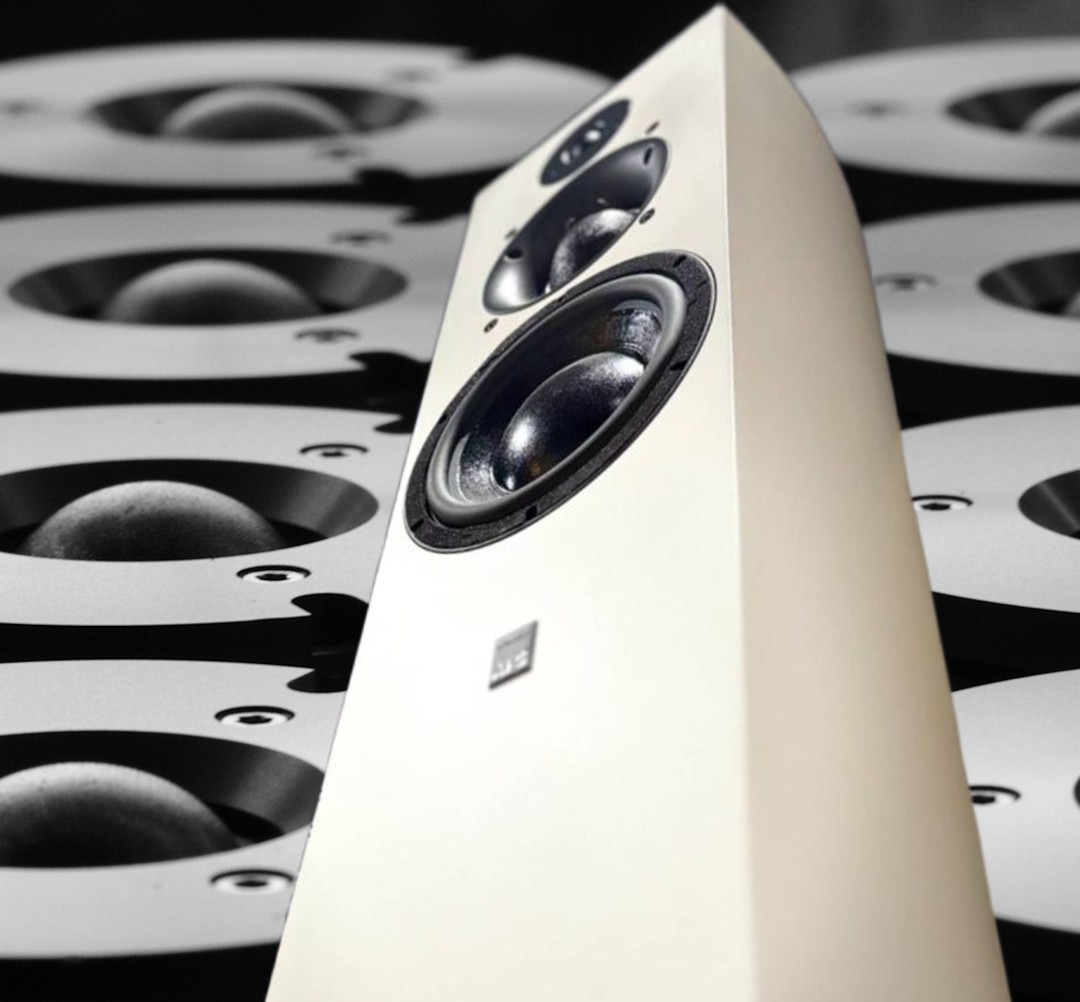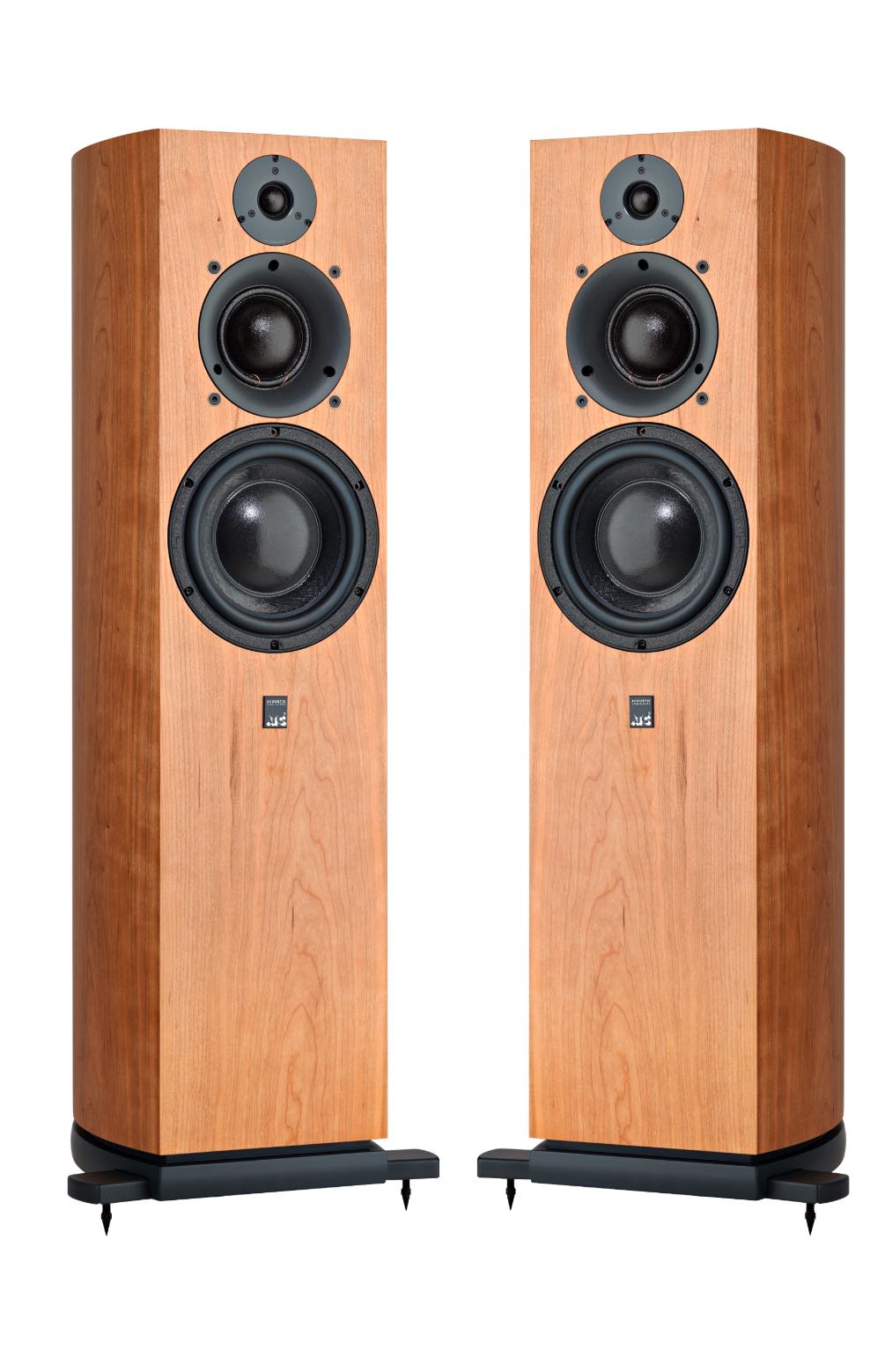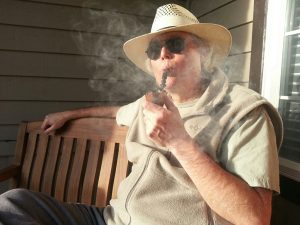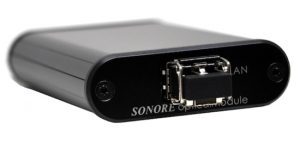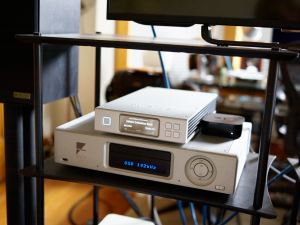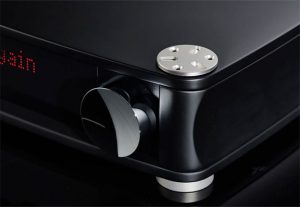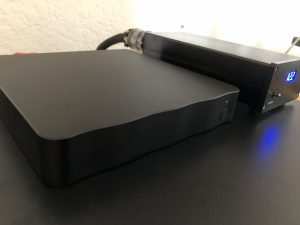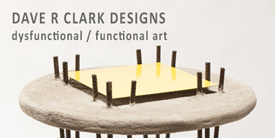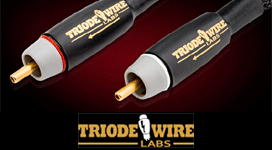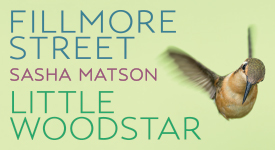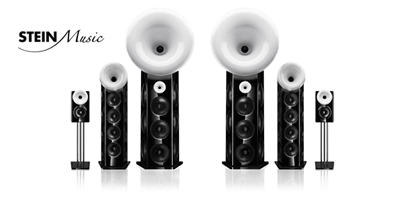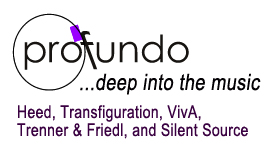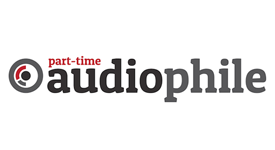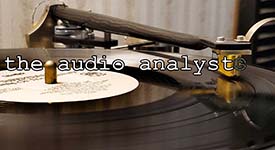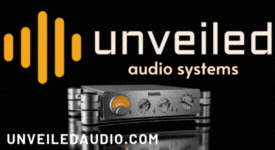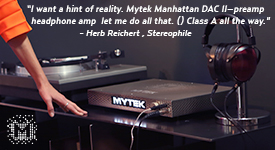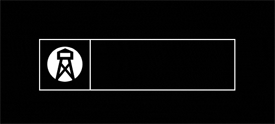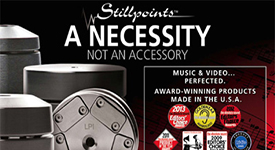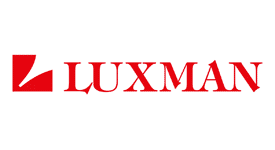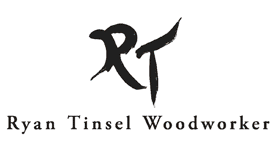Let's assume that, like many into hi-fi, you're extremely busy and prefer a minimalist aesthetic, reference-level sound, and low-fuss gear. In that case, the Sonore Ultra Rendu Deluxe SE music player may be the music player for you.
When I first spotted the Sonore Signature Rendu SE Deluxe, it was featured in a high-end installation totaling over $220,000 at Audio Expo North America 2024. Low-slung and unobtrusive in its sleek, 12.75" W x 3" H x 10.25" D black aluminum chassis, it performed seamlessly as it delivered music to a gleaming pair of $85,000 Von Schweikert VR-55 Mk II loudspeakers that were driven by four WestminsterLab REI Class A Monoblock Amplifiers ($67,800). Teamed up with the WestminsterLab dual-Mono Quest Balanced Preamplifier ($53,800) and Lampizator's Poseidon Balanced DAC/Preamplifier ($25,800), it rendered a rich and full-bodied delivery with dynamics and detail: Ricky Lee Jones' vocals in "Chuck E's in Love" were clear, the drums and percussion crisp and clean; Carlos Santana's guitar was vivid, as were the background female vocals, keyboards, and finger snaps. "Shirley Horn's vocals in 'Beautiful Love' were sultry and smoky; accompanied by a slow-plucked electric guitar, this torch song delivered in spades," I'd noted in my AXPONA 2024 report.
The Sonore Signature Rendu SE Deluxe, with its single enclosure of its optical Rendu transport and Signature Power Supply, is, according to their literature, the "absolute finest streaming USB source" they have made to date, achieving a very low-noise power delivery to a connected USB DAC by integrating the two components and incorporating a linear power supply, a redesigned circuit board, and an optical Ethernet input to eliminate network noise. Moreover, a stainless steel barrier inside the chassis acts as a Faraday cage, protecting processing circuitry from potential electromagnetic and radio frequency interference.
"The Signature Rendu SE Deluxe takes fiber optic Ethernet input, or cable Ethernet input, and renders it to a perfect, ultra-low noise USB feed to one's USB DAC," their literature says.
It builds and expands on the concept of their very successful opitcalRendu, using a single chassis design, which enables close coupling of its processing board and power supply for ultra-low impedance and low noise power. Its large processing board allows for multiple separate low noise regulation stages, increased physical separation of the USB output and Ethernet processing sections that, in turn, reduces crosstalk and noise even further. It also employs two "ultra-low phase noise (so-called "femto") oscillators to govern all processing, network circuits, and USB audio circuits." Two ultra-low phase noise (so-called "femto") oscillators are used to govern all processing, network circuits, and USB audio circuits. (www.smallgreencomputer.com)
Its software features a robust selection list of output modes, including:
- Sonicorbiter 2.5 Mode #1 SqueezeLite Output. This output works with any Logitech Media Server and compatible controllers. This output supports true gapless playback of PCM, DSD/DoP, and native DSD.
- Mode #2 ShairPort Output. This is an AirPlay emulator that utilizes streams sent to it from a compatible source. This output supports true gapless playback of PCM.
- Mode #3 MPD/DLNA
- Output Mode #3a DLNA Output. This output utilizes streams from UPNP/DLNA servers and controllers. This output can be configured as an OpenHome renderer. This output supports true gapless playback of PCM, DSD/DoP, and native DSD.
- Mode #3b MPD Output. This output is intended to work with a SMB mount. This output supports true gapless playback of PCM, DSD/DoP, and native DSD.
- Mode #3c Songcast Output. This output accepts streams from your computer running Linn Songcast. The application is in Beta form.
- Mode #4 HQ Player NAA Output. This output utilizes streams from Signalyst's HQ Player running on your computer. Digital signal processing is performed by HQ Player and then asynchronously streamed to the Network Audio Adapter (NAA) output. This output supports true gapless playback of PCM, DSD/DoP, and native DSD.
- Mode #5 RoonReady Output. This output utilizes streams from Roon. This output supports true gapless playback of PCM, DSD/DoP, and native DSD.
- Mode #6 Spotify Connect Output. This output, which can be controlled by your computer or tablet running the Spotify application, is based on Librespot—an open source client library for Spotify.
Impressed, I spoke briefly with Andrew Gillis (whose company, Small Green Computers, assists in manufacturing the Sonore Signature Rendu SE and sells them) at the show and, months later, reached out to him to inquire about reviewing the Signature Rendu SE.
Photo courtesy of Andrew Gillis, Vortex Box Founder, LinkedIn.com page.
A Few "Bits" about Andrew Gillis
"I recently attended an audio show and had the chance to visit some high-end rooms with very expensive equipment," Small Green Computer's CEO, Andrew Gillis, wrote via email. "I noticed some of them were using our SonicTransporter Music Servers and a Sonore Signature Rednu as their source. We had no affiliation with the companies that set up the rooms, and they don't see our products. They were just using the best-sounding source they could get to show off their amps and speakers."
No doubt, he was wearing his signature chartreuse (bright yellow-green) Oxford shirt and blue jeans that he wears at trade shows. Slender and standing well in excess of six feet, he's soft-spoken, thoughtful, and given to an economy with words.
When queried where he grew up and attended school for background information, he responded, "Rhode Island," and "Yes, in Vermont."
Regardless, he hit the ground running when it came to computers, software, and peripherals.
He served as a customer support engineer at MultiLink for a couple of years, supported Solaris and Linux-based VOIP voicemail platform as a senior systems engineer for another two, and over five years started the Asterisk@Home project, and sold it to Fonality. "We renamed it to Trixbox," he noted on LinkedIn. "I then ran the trixbox.org project for Fonality." Then he founded VortexBox.
"We started selling VortexBoxes for use by the Squeezebox community," Gillis continued via email. "This was a wildly popular product, and we sold a lot of them. When Roon came out, we started selling Roon servers. We had both the first Roon-approved music server and the first Roon Ready streamer."
"I started the VortexBox project to build a simple CD Ripper and music server for the Slim Devices Squeezebox that later became Logitech Media Server."
And then in 2015, he founded the company, Small Green Computer, whose goal is "to build the fastest, most reliable, and simple-to-use music servers in the industry." Their servers are designed to work with Sonore streamers. SGC and Sonore are sister companies. They work together, and some of Sonore's components are assembled by SGC (Google AI search, October 25, 2015).
"We are two separate companies that work closely together on product development," Gillis elaborated. "SGC concentrates more on music servers, and Sonore focuses more on music streamers."
One of the crowning achievements of their partnership is the Sonore Signature Rendu SE Deluxe network music player. "Sonore has gone through many evolutions of streamers with a constant drive to make them lower noise and improve their sound," Gillis wrote. "The Signature Rendu SE Deluxe is the result of 10 years of research." It's been a fruitful venture, with sales going "Very well," he says. "There was a time that flashy music servers with screens, knobs, bells, and whistles were all the rage, but I think the music industry is back to focusing on what is the most simple and sounds the best."
Andrew Gillis demonstrates the Sonore Signature Rendu at a recent Audio Expo North America display (still image courtesy of a video on the Small Green Computer Facebook page)
The word on Small Green Computers seems to be getting around. "I recently attended an audio show and had the chance to visit some high-end rooms with very expensive equipment. I noticed some of them were using our SonicTransporter Music Servers and a Sonore Signature Rednu as their source," Gillis shared. "We had no affiliation with the companies that set up the rooms, and they don't see our products. They were just using the best-sounding source they could get to show off their amps and speakers."
Sonore Signature Features
- The internal power supply is a no-compromise design featuring a custom-wound EI-style transformer from Mercury Magnetics (made in the USA). This transformer effectively blocks AC line noise, providing a solid foundation of clean power.
- Ultra-soft recovery diodes and film capacitor damping assure a DC supply free of ringing artifacts, and massive power supply capacitance (50% more than used in even the Sonore Signature Supply) ensures low impedance/low ripple power delivery to our main, discrete linear pre-regulator.
- A stainless-steel chassis divider protects the processing circuitry from both AC wiring and transformer-based stray RF and EM interference.
- The Signature Rendu SE optical is housed in a beautiful custom-made aluminum chassis (made in the USA), which is right at home alongside the finest audio components in the world.
What's Included
- 1 x Signature Rendu SE Deluxe
- 1 x standard grade IEC-C13 power cord
- 1 x Finisar SFP module
- 1 x Synergistic Research purple fuse
Recommended add-ons
- If your router or Ethernet switch has an SFP slot, add an additional Finisar SFP module with a 1M fiber cable
- If your router or Ethernet switch has ONLY wired Ethernet, add the opticalModule Deluxe, a Finisar SFP module, a 7V linear power supply, and a 1M fiber cable
Impressions on Unpacking and Installing the Signature Rendu
The Sonore Signature Rendu SE Deluxe network player arrived with the Trendnet TEG-S52SFP Gigabit Switch, Sonore systemOptique fiber optic cable, fiber optic cables, and a systemOptique Finisar SFP module. The setup was pretty easy. I disconnected my network switch (the hardware device that connects my music server, computer, and other devices to my router upstairs via Ethernet cable), replaced it with their Trendnet switch, connected the fiber optic cable, and tethered it to my Schiit Audio Yggdrasil Analog 2 DAC (Digital to Analog Converter) with a Straight Wire USBF-Link USB cable. (Note: The Yggdrasil Analog 2 has a galvanically isolated USB output through its Unison USB interface, isolating it from the computer and its noise, resulting in a cleaner sound.) After plugging in the power cable, I located it on my network via the Roon Labs app on my iPhone, and minutes later, I had music! All told, setup consumed perhaps 2o minutes. (You can view a video on setting up the Sonore Signature Rendu SE Deluxe HERE.)
This was a far cry from the long hours it took to build and configure my Intel NUC with the Roon ROCK (Roon Optimized Core Kit), reinstalling the ffmpeg codecs in the Data/Codecs folder of my Roon OS to enable internet radio station playback (being a non-programmer, I had to scour discussion boards and talk with a Roon tech on the phone to facillitate the Codecs replacement), and the crazy process of taking apart the Nook, removing the fan, and reassembling it in a fan-less case. All told, the NUC and fanless solution ran me upwards of $1,100 and 25-plus hours of hand-wringing labor.
In terms of sound signature, initially, I felt the Sonore Signature sounded slightly more refined than my NUC server/player (the NUC served as the network media server in both cases). Still, after many close A/B playback comparisons, I found it difficult to distinguish between the two. It was like comparing the streaming service performance of Qobuz Hi-res files and TIDAL's Master Tracks; they both sounded excellent in my system (you can view that by clicking on my byline at the beginning of this review).
Note: When I shared my findings with Andrew Gillis, he wrote, "It's unfortunate that you didn't hear much of a difference between the Rendu and an NUC. Typically, there is a very noticeable difference between the two. The NUC has a lot of switching supplies and sends a lot of noise down the USB bus. Not sure what happened there."
Bottom line, it boils down to investing a larger premium for plug-and-play on an upscale network player versus shelling out less cash but paying a ton in sweat equity for this do-it-yourself approach.
A Small DSD-Playback Issue with My Non-DSD Playing DAC
There was a hiccup regarding DSD playback (Direct Stream Digital, a high-resolution audio format with an extremely high sampling rate, that arguably results in a more detailed and natural sound versus standard formats like PCM (Pulse Code Modulation) when using the Sonore Signature as the network player with my Schiit Yggdrasil DAC. The Yggie does not play DSD files natively, but requires a conversion from DSD to PCM files via the Roon or other media playback and managing software. With the ROCK-embedded NUC, this happened by default. However, with the Sonore Signature in the signal path, it did not. Suddenly, I could not listen to my DSD files on my server! Alarmed, I reached out to Small Green Computer.
Andrew Gillis responded with the following email message:
There is no way for a streamer to know if a DAC supports DSD. So how the DAC supports DSD must be set up in the streamer.
For the Rendu you can set this in sonicorbiter.com -> manage -> settings -> Roon Ready
Set DSD to none if your DAC does not support DSD.
-Andrew
Problem solved!
Also, occasionally, when there was a power blackout or I had to unplug my system during severe thunderstorms, a red indicator light at the back of the unit served notice that it wasn't powering up properly. In those cases, I conducted a hard reboot. I unplugged and reconnected the power cord, the fiber optic cord, and turned the unit on and off. Inevitably, soon the green indicator light turned on, and we were good to go.
And, like that, I was back to my blissful digital listening sessions without further ado. It's been wonderful! As it stands, I have enjoyed listening to premium digital playback using the Sonore Signature SE Deluxe network player for months on end. Where does the time go? But now it's time.
Amore with Sonore: The Official Listening Session
The warmth, power, and grit of Susan Tedeschi's contralto vocals shine in "Darling Be Home Soon" (Tedeschi Trucks Band and Leon Russell. Tedeschi Trucks Band and Leon Russell Present: Mad Dogs & Englishmen Revisited (Live at LOCKN'/2015). Qobuz FLAC 44.1kHz, 24-bit. Fantasy, September 12, 2025, Product No. 0888072705227). They sound buttery in contrast to the harder-edged piano and Hi-Hat in the opening moments following their vamp, but build in energy as tasty slide guitar comps. Then the full band of guitars, bass, and organ is accompanied by the choir vocals of Claudio Leanear, Rita Coolidge, Pamela Polland, and Chris Robinson. She's taking us to church! Derek Trucks' whining and wailing crescendos, giving way to her powerful lead in this energetic, feel-good anthem.
The slam of Zachory Alford's sticks on the snare's batter head and Hi-Hat are crisp and palpable. At the same time, Tony Visconti's bass line and Gerry Leonard's wailing guitar drive the charge behind David Bowie—who, according to producer Tony Visconti (The Guardian.com), employs "a perculiar nasal drone" in his vocals for the title track of his album, "The Next Day" (David Bowie. The Next Day. Qobuz FLAC 96kHz, 24 Bit. Rhino, March 8, 2013, No. 5054187573965). It's a well-recorded stomp, and the Sonore Signature Rendu Deluxe SE delivers it with vim and realism.
It's a sublime acoustic treat as Sonny Clark's left hand lays down a strutting bass line, while his band maintains a compelling medium-tempo blues walk in the title track of Clark's Cool Struttin' album (Sonny Clark, Cool Struttin', FLAC, 96kHz, 24-bit. Blue Note, January 5, 1958. No. 0602577997907). On the left channel, Art Farmer's sprightly trumpet and, subsequently, Jackie McLean's bright and buttery alto saxophone solo, while Paul Chambers' resonant bowed double bass solos and Philly Joe Jones keep time on drums on the right, and Sonny Clark's piano charms front and center.
Like being roused from a dream in a sun-kissed mountain meadow, it's a sensory immersive experience as the recording opens with a succession of woodwinds, strings, a bassoon, a harp, and the Royal Concertgebouw Orchestra cascade, swelling and refraining by the masterful conductor, Bernard Haitink, in La Mer, symphonic sketches (3) for orchestra, L. 109: II Jeux de vagues." (Bernard Haitink, Royal Concertgebouw Orchestra. Debussy: Orchestral Works. 96 kHz, 24-bit Super Disk Transfer in DFF DSD64. Phillips, Augst 18, 2004. No. 0028946469729). Performed at the Concertgebouw in Grote Zaal, Amsterdam, the timbre and sonics are superb, compelling you to turn up the volume to hear every last drop of delicious detail.
And as I was about to conclude the formal listening, the vibrant rendition of gold-gilt-edged strains of Henry Szerying's violin and Janos Starker's cello in "Beethoven: Violin Romance No. 2 in F Major, Op. 50" compelled me to sit back down and listen deeply (Henryk Szerying, Joanos Starker, Royal Concertgebouw Orchestra, Bernard Haitink. Brahm: Double Concerto. Qobuz FLAC 96kHz, 24-bit. Decca Music Group Ltd., September 15, 1970. No. 002894345274). That was a moving reminder of why we listen to the music as we do!
Concluding Thoughts
The Sonore Signature Rendu SE Deluxe is a beautiful, minimalist solution that fits in with anything. As such, it's a well-engineered and unobtrusive music network endpoint and transport solution optimized to minimize noise and deliver a pristine digital signal to a separate DAC. And with the ever-changing landscape of advancement in DAC technology, that's not a bad thing; what once passed for cutting-edge years ago is now deemed inferior to mediocre at best. Hence, by keeping the DAC separate, the risk of obsolescence is minimized. Moreover, this allows the owner to explore the latest developments, options, and flavors of DACs. You want to try the latest R2R, NOS, pro, or exotic tube DACs? That's not a problem! The Sonore Signature Rendu SE Deluxe integrates seamlessly!
It is also extremely easy to set up. If you're a busy person with little time to waste, it's a lifesaver! It's virtually plug-and-play, allowing you to decompress and enjoy your music with a minimum amount of hassle.
The Sonore Signature Rendu SE Deluxe is also extremely silent. It filters out network noise, gets out of the way, and delivers pure, unadulterated music to wash over you in your listening environment. It just sounds good.
For these reasons, I recommend the Sonore Rendu SE Deluxe for your consideration.
Sonore Signature Rendu SE Deluxe
Retail: $5350
Small Green Computer
Specifications
- Supports the following PCM sample rates up to: 44.1kHz, 48kHz, 88.2kHz, 96kHz, 176.4kHz, 192kHz, 352.8kHz, 384kHz, 705.6kHz, and 768kHz
- Supports the following DSD sample rates up to: DSD64, DSD128, DSD256, DSD512 POP free DSD/PCM transitions
- Not all USB devices or output modes support the maximum sample rate of the unit
- RoonReady certified
- Running Logitech Media Server locally allows playback of local radio stations and streaming service
- Logitech Media Server allows you to use the unit as a UPNP server in combination with Drive Mounter
- Software Manager that allows you to install and uninstall apps as needed
- BubbleUPNP Server app allows any renderer to take advantage of the OhMedia - OpenHome protocol
- OhMedia - OpenHome protocol allows the Linn Kinsky and Linn Kazoo Apps with playlist support to be used as controllers
- Supports Tidal and Qobuz lossless streaming in Squeezelite output mode and DLNA output mode
- Native DSD is supported on select DACs
- The unit is controlled via third-party apps on your mobile device and on your computer
- Based on Sonicorbiter 2.5 released on 4/20/2017, closed source and open source (GNU -V2)
Audio
- Supported File Formats: FLAC, ALAC, WAV, AIFF, MP3, AAC, OGG, WMA, WMA-L, DSF, DFF
- Native Sampling Rates: 44.1kHz, 48kHz, 88.2kHz, 96kHz, 176.4kHz, 192kHz, 352.8kHz, 384kHz, 705.6kHz, and 768kHz
- DSD formats: DSD64, DSD128, DSD256 and DSD512
- Bit Depths: 16, 24, 32
Connectivity
- Network: 1 x Gigabit Ethernet SFP (OM1 SFP fiber Transceiver included)
- USB: 1 x USB 2.0 port for your DAC
- Network Protocols: Roon RAAT, NAA (HQplayer), DLNA, Squeezebox®
User Interface
- Android: App Available Online at Google Play Store - OrangeSqueeze
- iOS: App Available Online at Apple App Store - iPeng
- Roon App: for iOS or Android

